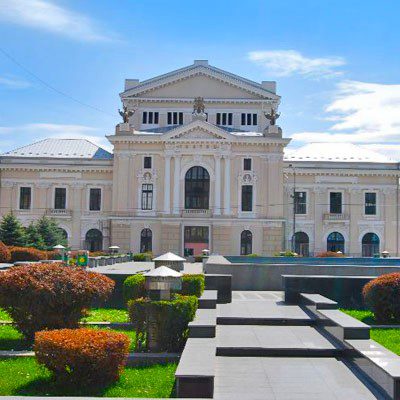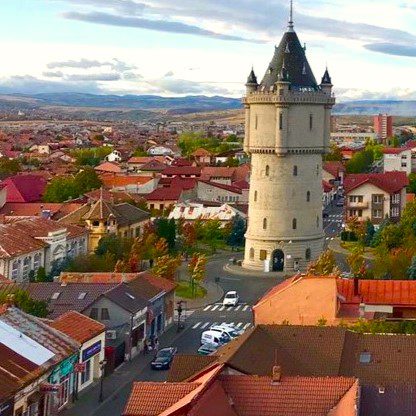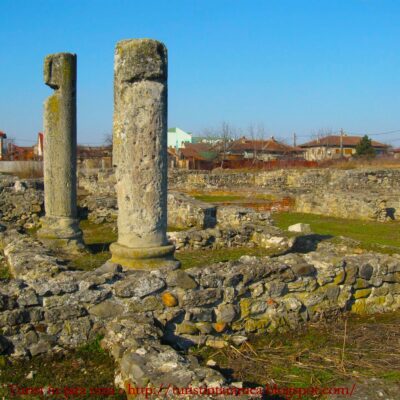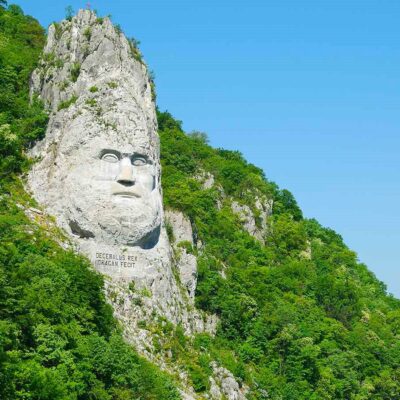“The city on the Danube” is a real visually delightful destination whose charm is shaped by natural, cultural and historical attractions. In addition to the impressive historical remains, one of the main jewels of this area is the geographical location.
An unmissable experience, if you plan to make it to this area, is taking a cruise on the Danube – the second largest river in Europe. A visit to the port city will recharge your batteries and enrich you culturally.
The town has been mentioned since antiquity in the writings of Ptolemy. In 121 it held the status of a municipality, and from 193 it became a colony. Later, it was a commercial and craft centre. In 1230 the Banat of Severin was established, which was then abolished by the Ottomans in 1524.
In 1830, the town was brought back to life by the Austrians. Due to its favourable geographical position, the town had become an important commercial, customs and naval point. In the interwar period it was one of the most important Romanian urban centres. The city developed during the communist period when the Iron Gates I and II hydropower plants were built.
The current name, Drobeta-Turnu Severin, was chosen in 1972. Until then, the city was known as “Turnu Severin”.
Drobeta-Turnu Severin is located in the southwestern part of Romania and is the residence of Mehedinți County. The locality is located on the left bank of the Danube, in the Topolnița depression. The city is surrounded by the Vărănic, Colibași, Balota and Stârmina hills.
The neighbouring regions are: to the north – Gorj, to the southeast – Dolj, to the south – Bulgaria, to the southwest – Serbia, and to the west – Caras-Severin.
It is the emblem of the city and is included on the UNESCO heritage list. It bears the name of a distinguished cultural figure, Theodor Costescu, who was a promoter of local cultural values. It was inaugurated in 1913, designed by the famous architect Grigore Cherchez. The beautiful building is a space where art and theater blend and take the form of events such as exhibitions, workshops, vernissages, concerts, and theater performances.
It is a vital center for the local community, contributing to the promotion of art and culture in the Drobeta Turnu Severin region.

Dating back to the 14th century, and carefully maintained through proper renovations, it stands impressively. Built by the Knights Hospitaller between 1247-1250, it was a key point for defending the Iron Gates against invasions. Destroyed by the Turks in 1524, today it is a historic site open to visitors, offering the ruins of a church and a restored tower. Access is via the alley between the Teodor Costescu Palace of Culture and Dragalina Park, or by car on Smârdan Street. If you’re passionate about history, this is a must-visit location.
Visiting hours: Tuesday – Sunday: 09.00 – 19.00

It is another symbolic monument of the city that began with the decision to supply the city of Turnu-Severin with water from the Danube using this castle in 1907. The construction of the Water Castle, made of reinforced concrete with two reservoirs, began in 1911 and was completed in 1913.
After losing its initial utility, the Water Castle was repurposed as the Castle of Arts, hosting cultural events and exhibitions. It is a long-term cultural project that celebrates the city’s cultural heritage.
If you’re more adventurous, you can climb to the top of the tower (27 m) to enjoy a complete view of the city.

These constructions date back to the early 100s, during the wars between the Dacians and Romans. The Roman Castrum was the military and political center and was the first stone fortress in Dacia, built by Emperor Trajan. Its ruins include the rebuilt foundations by Emperor Constantine the Great, the remains of Roman baths on the banks of the Danube, a paleochristian basilica in Ghica Square, and a Roman cemetery in Rozelor Park. Objects discovered, such as a bronze portrait of Faustina the Elder and a statue of Jupiter Dolichenus, are displayed in local museums.
The bridge was intended to facilitate the passage of Roman troops, with a length of 1135 meters, linking the Pontes fortress to the Drobeta fortress. Its ruins, including the first and last pillars, can still be seen today. It is a historic monument and part of the national cultural heritage.

A cruise on the Danube is a must-do activity and a wonderful way to explore the beauty of the river and admire the spectacular landscapes of the region. These cruises offer a relaxing and enjoyable experience, allowing you to discover local tourist attractions along the banks of the Danube: the Great and Small Boilers (Cazanele Mari și Mici), the Face of Decebal, the Veterans and Ponicova Caves. For those visiting Drobeta-Turnu Severin, a Danube cruise can be a memorable and relaxing experience.

The nearest airport is the Craiova Airport located 112 km away.
Drobeta-Turnu Severin train station is located on the Bucharest-Timisoara line. To check the train schedule, access this site.
If you prefer a faster option, you can choose to travel by bus / minibus. Here you will find all the necessary information for this: bus stations and stops, departure and arrival times, destinations.
If you want to travel from Bucharest to Drobeta-Turnu Severin by car, you will have to take DN6 (E70). The route is as follows: Bucharest – Pitești – Craiova – Drobeta-Turnu Severin. The distance is 340 km, which means about 4 and a half hours driving.

If you like music festivals, in Constanta you will find one to your taste, regardless of the style of music you prefer. Here you have a list with some of them, but you should know that every weekend there are events for all tastes.
Daco-Roman Festival – brings together troops of Dacians, Romans and gladiators, warriors who parade and perform military demonstrations. Visitors can admire the performance of ancient dances, can participate in various workshops and camps. The event takes place between 19-21 April.
What are you waiting for? Come and have a good time, enjoy music, nice people and magical places.